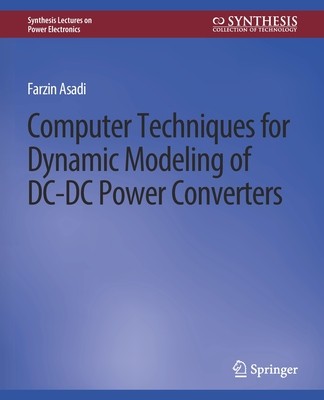
- We will send in 10–14 business days.
- Author: Farzin Asadi
- Publisher: Springer
- ISBN-10: 303101376X
- ISBN-13: 9783031013768
- Format: 19.1 x 23.5 x 0.5 cm, minkšti viršeliai
- Language: English
- SAVE -10% with code: EXTRA
Computer Techniques for Dynamic Modeling of DC-DC Power Converters (e-book) (used book) | bookbook.eu
Reviews
Description
Computers play an important role in the analyzing and designing of modern DC-DC power converters. This book shows how the widely used analysis techniques of averaging and linearization can be applied to DC-DC converters with the aid of computers. Obtained dynamical equations may then be used for control design.
The book is composed of two chapters. Chapter 1 focuses on the extraction of control-to-output transfer function. A second-order converter (a buck converter) and a fourth-order converter (a Zeta converter) are studied as illustrative examples in this chapter. Both ready-to-use software packages, such as PLECS(R) and MATLAB(R) programming, are used throught this chapter.
The input/output characteristics of DC-DC converters are the object of considerations in Chapter 2. Calculation of input/output impedance is done with the aid of MATLAB(R) programming in this chapter. The buck, buck-boost, and boost converter are the most popular types of DC-DC converters and used as illustrative examples in this chapter.
This book can be a good reference for researchers involved in DC-DC converters dynamics and control.
EXTRA 10 % discount with code: EXTRA
The promotion ends in 21d.12:07:57
The discount code is valid when purchasing from 10 €. Discounts do not stack.
- Author: Farzin Asadi
- Publisher: Springer
- ISBN-10: 303101376X
- ISBN-13: 9783031013768
- Format: 19.1 x 23.5 x 0.5 cm, minkšti viršeliai
- Language: English English
Computers play an important role in the analyzing and designing of modern DC-DC power converters. This book shows how the widely used analysis techniques of averaging and linearization can be applied to DC-DC converters with the aid of computers. Obtained dynamical equations may then be used for control design.
The book is composed of two chapters. Chapter 1 focuses on the extraction of control-to-output transfer function. A second-order converter (a buck converter) and a fourth-order converter (a Zeta converter) are studied as illustrative examples in this chapter. Both ready-to-use software packages, such as PLECS(R) and MATLAB(R) programming, are used throught this chapter.
The input/output characteristics of DC-DC converters are the object of considerations in Chapter 2. Calculation of input/output impedance is done with the aid of MATLAB(R) programming in this chapter. The buck, buck-boost, and boost converter are the most popular types of DC-DC converters and used as illustrative examples in this chapter.
This book can be a good reference for researchers involved in DC-DC converters dynamics and control.


Reviews